andresr
Co-produced with “Hidden Opportunities”
Blood on the streets seems to be the 2022 sentiment about the stock market, but one sector, in particular, has experienced an unprecedented selloff despite solid fundamentals. The deeply discounted biotech sector has now caught the attention of big hedge funds and investment bankers due to cheap valuations and the lack of catastrophic tailwinds for the industry.
This is not like Hillary Clinton’s attempted drug price control in the 1990s, the genomics bubble of 2002, or the healthcare reforms under President Obama. While some COVID-19 vaccine manufacturers were trading at frothy valuations, the sector has strong fundamentals and is well-positioned for positive YoY comparisons. Despite the effects of market sentiment and valuation concerns of a small subset of companies, this sector continues to be of critical importance due to several reasons:
-
Aging population in the U.S.: It is projected that by 2030, 1-in-5 Americans will be 65 years old and over. As a result, healthcare expenses are projected to grow annually by 5.1% through 2030, with Medicare forecasted to have the highest growth rate (7.2%). The U.S. government doesn’t seem to be prioritizing measures like immigration to bring down the average age of the population, creating these projections for higher expenditure in the coming years.
-
Healthcare is a matter of National Security: The COVID-19 pandemic infected tens of millions worldwide, killed millions, and led to the shutdown of leading economies. Nations will continue to spend to enhance medical and public health infrastructure to be prepared for future pandemics and bioweapons.
-
Recovery of medical procedures: As the world begins to think past the pandemic, hospitals expect more patients to receive surgery in the second quarter of 2022. This means the healthcare sector is well-positioned to report positive YoY comparable earnings.
-
Healthcare is an excellent place to invest during bear markets: Medical needs don’t have seasonal or cyclical patterns. Health industry profits are not impacted by inflationary pressures, recessions, and bear markets. If history is any guide, this sector performs well during bear markets.
ForexTrainingGroup.com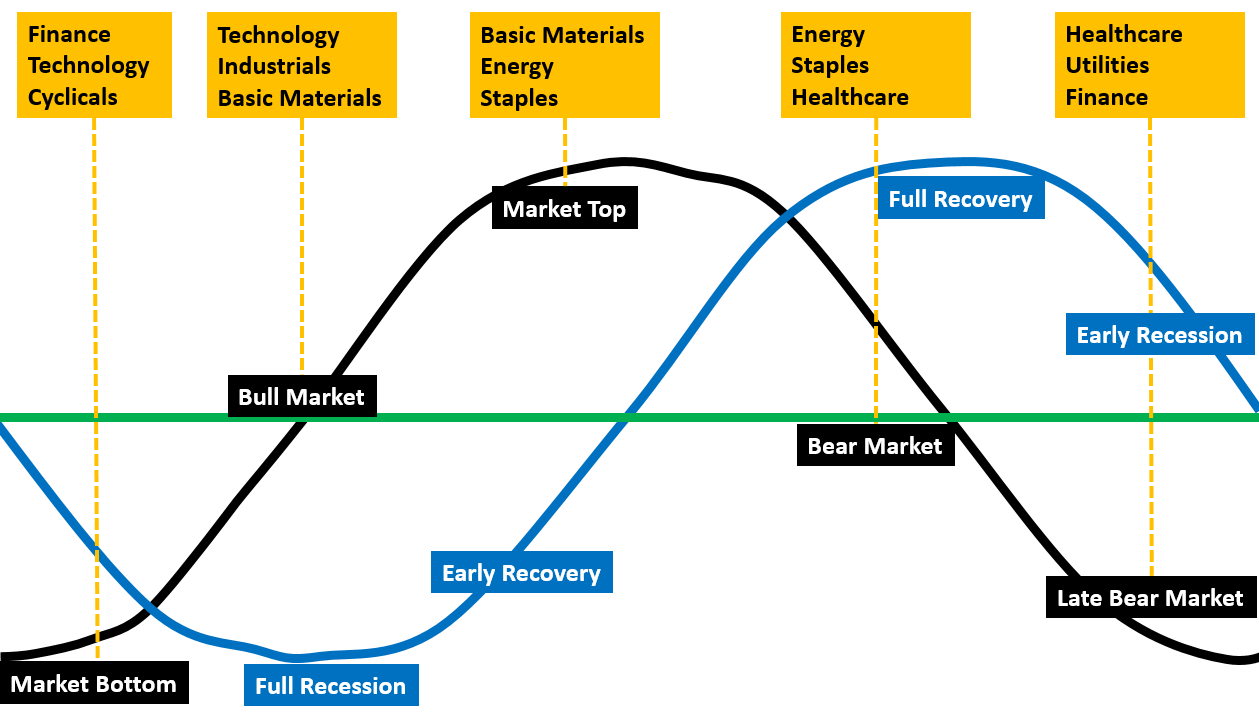
To invest in healthcare, it is critical to stay on top of the advancements in medical sciences and understand drug pipelines, addressable markets, and drug patent expirations amid several other industry-specific parameters. As an investor without any academic or professional experience in the science of biotechnology or pharmaceuticals, I need to rely on experts who can understand the field thoroughly to select the right companies. Enter Tekla Capital Management, a team of medical doctors who have decades of investing and portfolio management experience.
“We are healthcare investment managers, not investment managers that manage healthcare” – Tekla Capital Management
The best part is that Tekla actively manages its funds with the intent to generate current income for shareholders. In this report, we will review two Tekla closed-end funds (“CEFs”‘) with up to 8.3% yields to pursue long-term opportunities within healthcare in the spirit of the income method.
Pick #1: HQH, Yield 8.3%*
Tekla Healthcare Investors (NYSE:HQH) has its assets heavily allocated to biotechnology and pharmaceuticals, representing ~73% of the overall portfolio of 152 companies. (Source: HQH Fact Card)
HQH Fact Card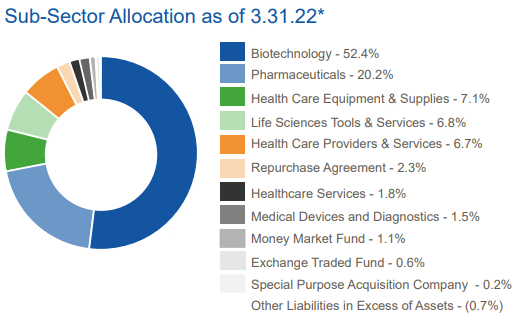
The fund’s top holdings are leading global biopharma names whose innovative output not only proved critical to helping the world handle the COVID-19 pandemic but also helps save millions of lives every year.
HQH Fact Card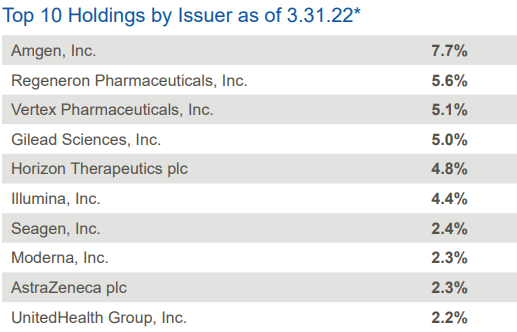
It is important to note that HQH has a managed distribution policy, where the CEF will make quarterly distributions at a rate of 2% of the fund’s net assets. This means that HQH distributions will vary based on broader market movement. Still, the CEF has a strong track record of filling the pockets of its shareholders with large sums of money, an average of $1,233/year for a $10,000 investment since inception.
How is it possible to maintain a relatively consistent payout when the price of the holdings varies based on market trends?
HQH’s distributions come from capital gains, investment income, and return of capital (“ROC”). Moreover, the CEF doesn’t employ the use of leverage in its investment strategy.
Author’s calculations from distribution reports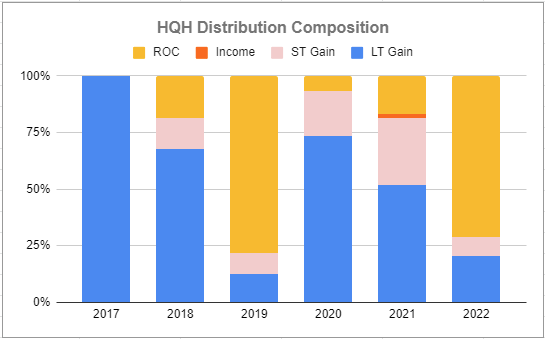
ROC gets a nasty reputation as investors think the fund manager is returning their investment dollars. While this is true in principle, it is essential to note that if the fund maintains or grows its Net Asset Value (“NAV”) over time despite making distributions, you have a sustainable investment in your hands. HQH has distributed $18.83/share since inception while maintaining a growing NAV.
Today, HQH trades at an attractive 6% discount to NAV, presenting a valuable opportunity to lock in a handsome 8.3% forward yield (*based on the projected Q3 distribution) and set yourself up for growing distributions as the underlying sector recovers.
Pick #2: THQ, Yield 6.6%
Tekla Healthcare Opportunities Fund (NYSE:THQ) is another Tekla CEF that provides less emphasis on biotech and adds diversification across additional critical healthcare segments such as providers, services, equipment suppliers, life sciences, medical devices, and REITs, to name a few. (Source: THQ Fact Card)
THQ Fact Card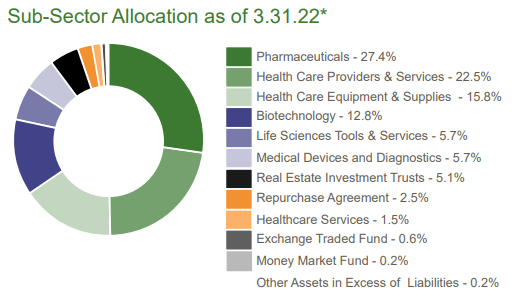
The fund’s top holdings are leading global pharmaceuticals and healthcare providers:
THQ Fact Card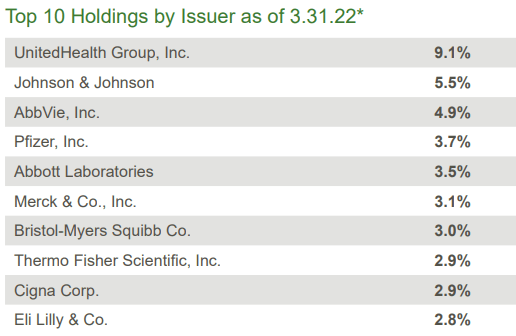
THQ has maintained a steady $0.1125/share distributed monthly since its inception in 2014. This CEF has paid $10.877/share over eight years while growing its NAV, indicating a highly sustainable active management strategy to deliver value for shareholders.
Since 2017, THQ has relied far less on ROC than its sister fund, HQH. But the deep selloff in the healthcare sector since mid-2021 has resulted in its YTD distribution being almost 58% ROC. It is also important to note that THQ is modestly leveraged by 20% to boost returns to shareholders.
Author’s calculations from distribution reports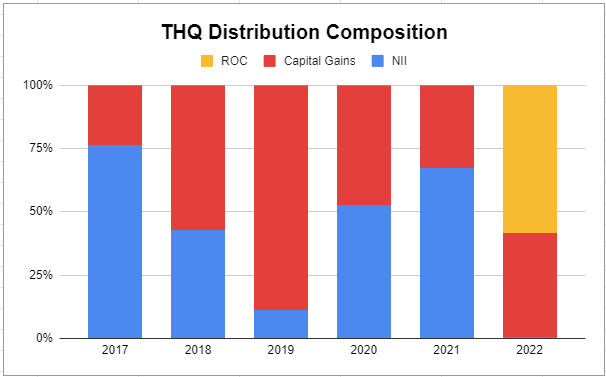
Again, I want to remind investors that ROC isn’t a bad thing as long as the fund maintains (or grows) its NAV. Here, THQ is demonstrating sustainability and a high degree of stability in its monthly payments, making it a solid investment during volatile times. Today, THQ trades at a 6% discount to NAV, making it a bear market bargain in an essential sector.
Conclusion
With a massive pile of money on the sidelines, hedge funds have their eye on healthcare, where there has been limited logic to the catastrophic selloff. This is one of the most critical industries in our economy. This global pandemic has taught us that it is actually a matter of national security – good health and well-being of the citizens is a prerequisite for a growing economy. We need more innovation in pharmaceuticals, biotechnology, life sciences, medical devices, and surgeries. Moreover, as the U.S. population ages, we are looking at the need for more long-term care facilities, medical service providers, and increased spending over the next decade.
While lucrative with tremendous long-term potential, it is a tricky sector to identify winning companies as the underlying science, technology, and regulatory hurdles are beyond the understandable levels for an average investor. Combined with our primary requirement for current income, we prefer to invest in diversified CEFs managed by the best in the space. Tekla Capital Management is a team of highly experienced investors who are also trained, healthcare professionals. We present two Tekla CEFs – HQH and THQ that present excellent opportunities at this time of uncertainty. Both share characteristics that benefit an income investor since they
-
Trade at healthy discounts to NAV.
-
Have a strong track record of paying large distributions to shareholders.
-
Maintained or grew their NAV since inception.
-
Invest predominantly in US-based large-cap healthcare companies.
Demand for health services is inelastic – people don’t avoid necessary surgeries and stop purchasing lifesaving drugs during a recession. Two picks with yields of up to 8.3% to pursue the income method of investing in healthcare.


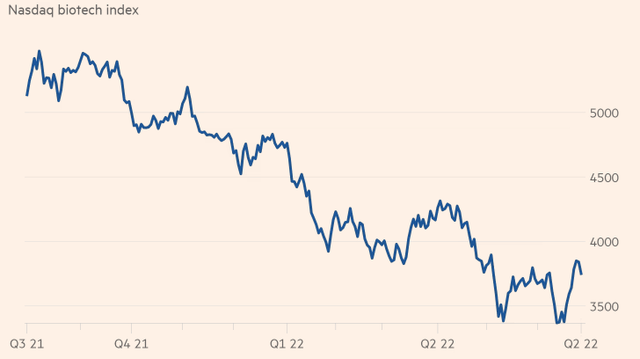
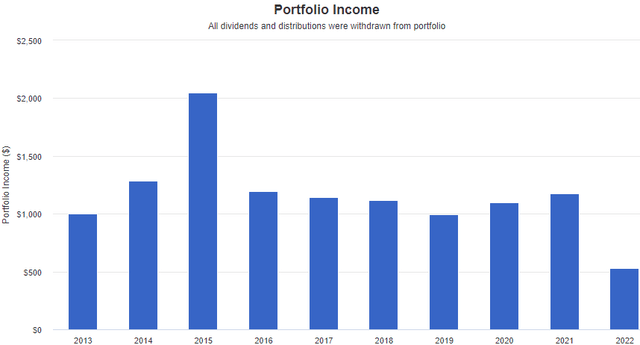
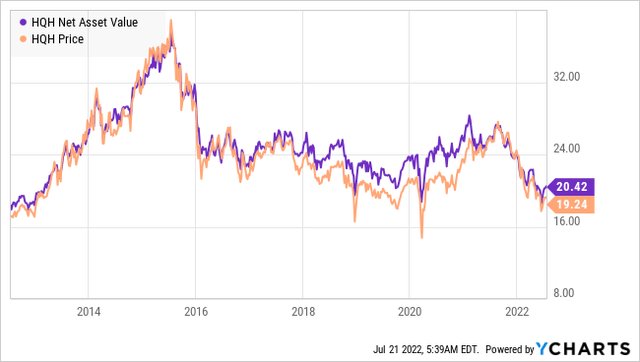
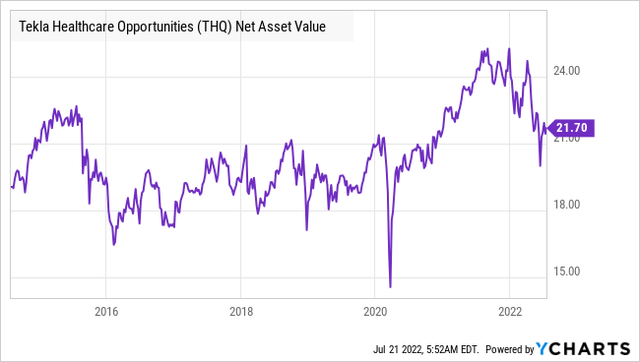
Be the first to comment